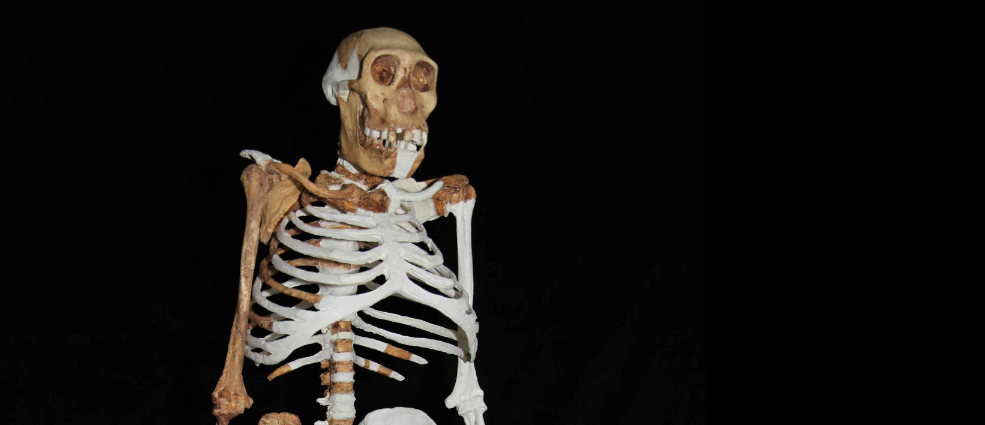New Scientist
Image: Lee Berger
The pair lay at the bottom of a deep hole for 2 million years, buried in oxygen-starved mud that fossilised their bones. The conditions were so unusual that an additional treasure may have been preserved: the oldest known human skin.
Since the two Australopithecus sediba skeletons were unearthed at the Malapa cave site in South Africa in 2008, researchers studying them have dropped tantalising hints that they could have remnants of skin. The latest signs suggest an announcement is imminent. Meanwhile, a set of studies published last week has confirmed that A. sediba is a pivotal species that may bridge the gap between the ape-like australopiths and the first members of our own genus.
The skeletal analyses confirm that A. sediba has a mosaic of ancient australopith and modern Homo features. Its teeth, for instance, are remarkably human-like. Whereas most australopiths have large, prominent canines, A. sediba‘s are small, like ours, according to Darryl de Ruiter at Texas A&M University in College Station and his colleagues (Science, doi.org/k7h).
The skeletons also suggest that A. sediba had the early makings of a tapering human waist. Peter Schmid at the University of Zurich, Switzerland, led a team that found that its lower ribs sweep inwards, as ours do (Science, doi.org/k7j). This allowed abdominal muscles to be arranged in a way that makes walking more efficient. Other australopiths are thought to have lacked a waist, says Schmid. Read more on newscientist.com…








